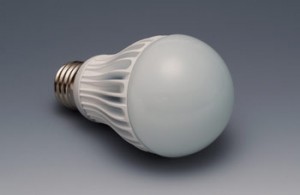In recent years, many people raise doubts about the energy saving function of LED lights. Does LED light consumption really half as much as that of traditional light? Theoretically, this can be realized: traditional light source is full-angled (half of which is useless light), while source for LED light is half-angled (none of which is useless light). However, this theory is too subjective to be used. Obviously, people who presented this theory had little acknowledge of LED applications and LED lamps.
Under what circumstances traditional light sources are considered as half efficient?
- There is no other lamp tool, like projector, during the installation. The light on the opposite side is directly emits to sky.
- The back of the light source is a rather high ceiling with very weak light reflection capability.
- The internal side of the lamp is completely black, all the light emits from the back will be absorbed totally.
However, in practical lighting applications, reflection lamp tools (projectors) are necessary for different purposes. In order to fully use the light, the internal of projectors will be mounted by all kinds of instruments with light reflection functions: lens reflection or diffuse reflection. Even for those filament lamps used in a very early age (with no reflection lamp outer covers or projectors), the reflection rate is as much as 70%. Most of the light would be reflected though ceilings and walls, if they had smooth surfaces. Nowadays, fluorescent lamps are widely used all over the world. This type of lights has no specialized projector, still using walls reflecting.
Even traditional lights have no effective projectors like LED lights does, they still can reflect most of the light emitting by light sources. However, LED lights which have been designed applying projectors with pretty high reflecting factor cannot 100% reflect the light coming out from light sources. However, it is cursory to judge that LED light consumption only half as much as that of traditional light is incorrect. It is not a problem as simple as “whether the earth is round or square?” Reflection ability is part of the optical-energy-converting efficiency of LED lights. There are many other aspects need to be considered. For example, LED street light itself has very high converting rate from electricity energy to optical energy, which contributes most of its much lower LED light consumption.

